In Windows 11, you can create multiple partitions on a hard drive. If a hard drive partition has more free space and you want to create a separate partition from that, you can do so by shrinking the volume of that partition. However, the Shrink Volume feature does not work for some users because the targeted partition contains unmovable files. If you are in such a situation, this article will help you. This post explains how to shrink volume with unmovable files in Windows 11.
This error is usually associated with the C drive. However, you can also get this error while shrinking partitions other than the C partition. While trying to shrink a hard drive partition, users get the following error message:
You cannot shrink a volume beyond the point where any unmovable files are located. See the “defrag” event in the Application log for detailed information about the operation when it has completed.
How to shrink volume with unmovable files in Windows 11
Here, I will explain how to shrink volume with unmovable files in Windows 11/10. The above error message prevents users from shrinking the volume on their C drive. I also tried this and got the same error message in the Disk Management Tool. Also, Windows does not show all the available space on the C drive for shrinking the volume. On my laptop, it showed me only 700 MB of free space available for shrinking the C drive. It may be different in your case. Some users reported that the available space for shrinking the C drive volume on their computer was 0 MB.
The main cause of this error is the unmovable files on the C drive. Hence, you need to fix the unmovable files to fix this error. Unmovable files are the files that you cannot move from the C drive, such as Hibernate file, Page file, System Restore files, etc. All of these are system-protected files. Therefore, you cannot delete them. Any one or all of these files might be causing this error. You can view the Event logs to know which file is responsible for this error.
According to the error message, you will get information about this error in the “defrag” event in the Event Viewer. Follow the steps below:
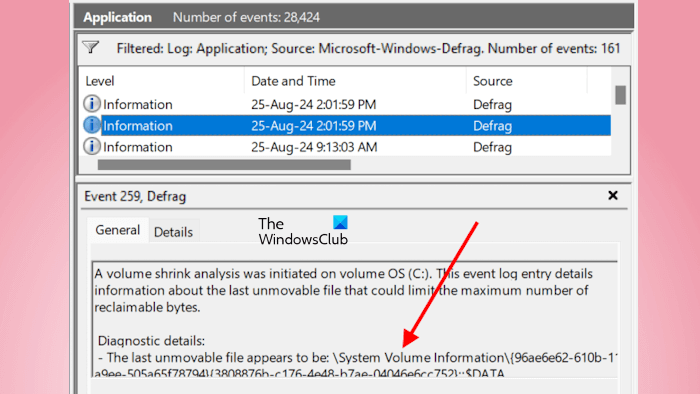
- Open Windows Event Viewer.
- Expand the Windows Logs category from the left side and select Application.
- Go to Action > Filter Current Log.
- Select Defrag in the Event sources drop-down and click OK.
- Based on the Date and Time, select the Defrag information from the list of events. You will see the description under the General tab.
Information about the last unmovable file will be available under the Diagnostic details section. The last unmovable file on my laptop was the System Volume Information. The System Volume Information folder is a protected folder in Windows 11 that contains System Restore files. To fix this, I had to turn off the System Restore. After doing this, the same error occurred again but this time, the file responsible for the error was the Pagefile. Hence, I had to disable that too. After doing this, the free space available to shrink the C drive was increased on my laptop.
The possible solutions to fix this error are:
- Disable Hibernation
- Disable the Pagefile
- Disable the System Protection feature (System Restore)
- Use a third-party tool to partition your hard drive
- Backup your data and perform a clean installation of Windows
I have explained these fixes below:
1] Disable Hibernation
Hibernation is a feature in Windows 11 that allows users to put their computer systems in a Hibernate state instead of shutting down. This feature allows users to continue their work from where they left off the last time.
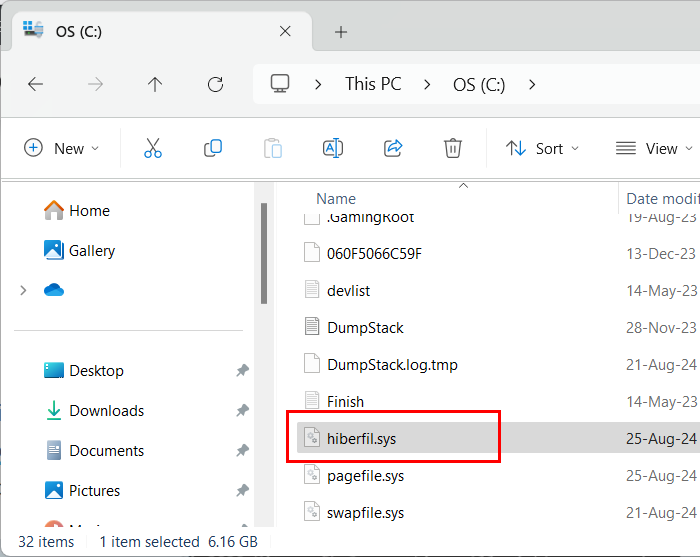
When Hibernation is active, a file named hiberfil.sys is automatically created on Windows 11. This file is available in the C drive. Disable hibernation on your system. Restart your system. After disabling Hibernation, the hiberfil.sys file will disappear from the C drive.
Read: How to re-partition a hard drive in Windows without erasing data
2] Disable the Pagefile
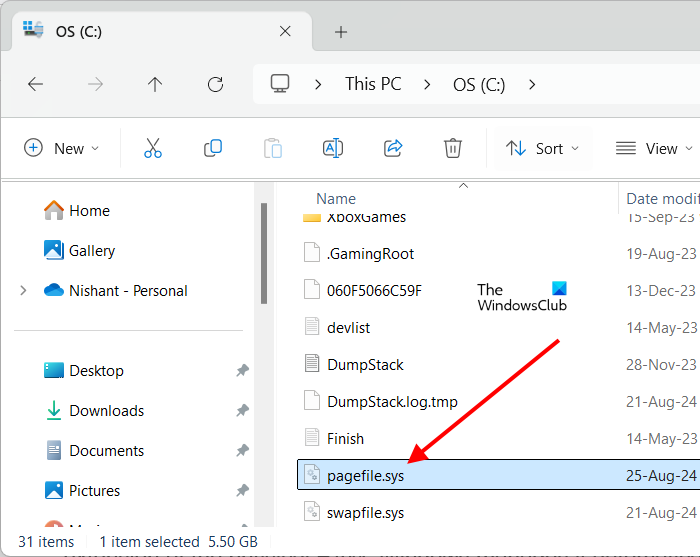
Windows uses the Pagefile as a virtual memory. Hence, the Pagefile acts as an extension of the physical RAM. Windows manages it automatically and it is enabled by default on all Windows computers. When this file is enabled, you will see the pagefile.sys file on your C drive.
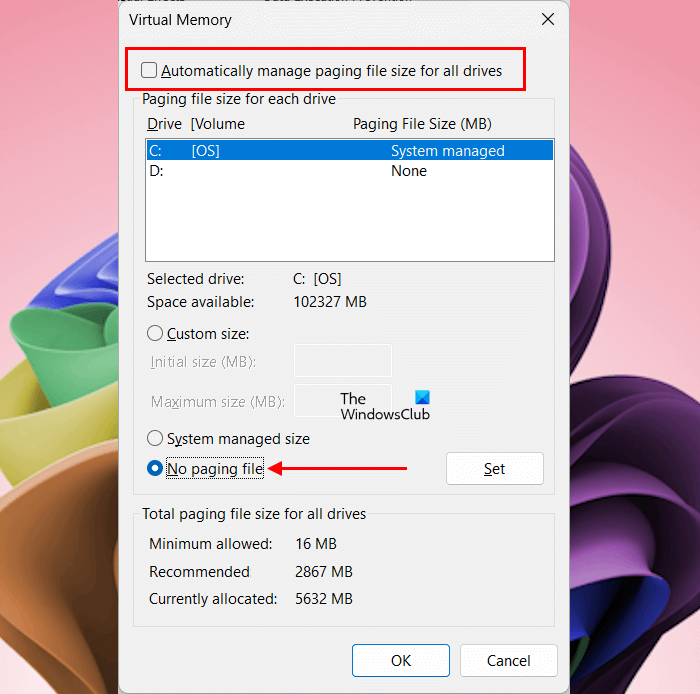
To disable the Pagefile, follow the steps provided below:
- `Click on Windows 11 Search and type Adjust the appearance and performance of Windows. Click on the best match from the search results.
- The Performance Options window will appear.
- Go to the Advanced tab. You will see the Virtual memory section there. Click on the Change button.
- Uncheck the Automatically manage paging file size checkbox.
- Now, select the No paging file option. Click Set and then click OK.
- Restart your computer.
After performing the above steps, the pagefile.sys file will disappear from the C drive.
Read: How to partition C drive in Windows without formatting
3] Disable the System Protection feature (System Restore)
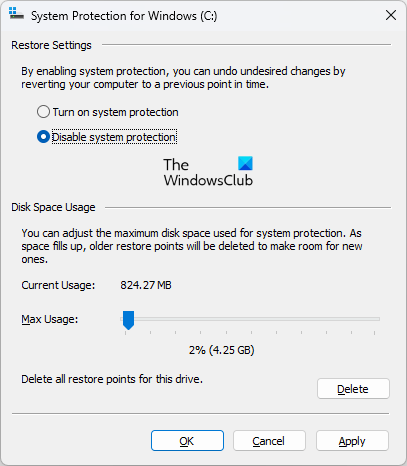
To disable the System Protection feature, you need to turn off the System Restore. After doing so, restart your computer.
You should now be able to shrink the volume of your hard drive partition. After shrinking the volume, remember to enable Pagefile and System Protection again.
4] Use a third-party tool to partition your hard drive
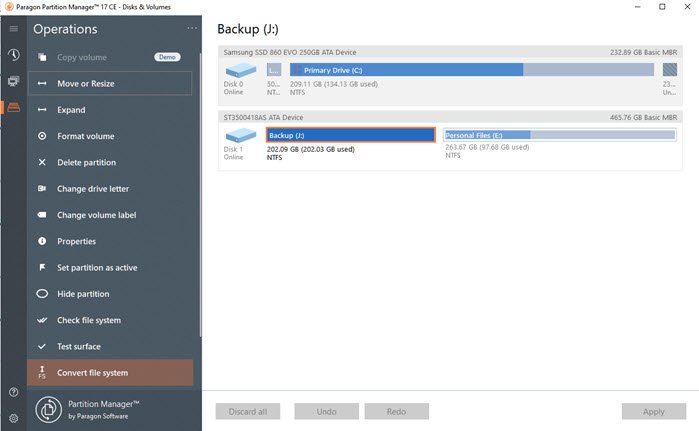
You can also use a third-party tool to partition your hard drive. The free versions of Paragon Partition Manager or Easus Partition Manager let you partition your hard drive.
5] Backup your data and perform a clean installation of Windows
If you cannot partition your hard drive after applying the above fixes, the last resort is to perform a Clean Installation of Windows. Back up all your data and perform a Clean installation of Windows. You can create partitions on your hard drive while performing the Clean Installation of Windows.
That’s it. I hope this helps.
How to shrink a volume in Windows 11?
To shrink a volume in Windows 11, open the Disk Management app and select the partition you want to shrink. Now, right-click on that partition and select Shrink Volume.
How do I disable unmovable files?
To disable unmovable files, you need to know which unmovable file you want to disable first. If it is a hibernation file, disable hibernation. If it is a pagefile, disable the Page File for the Virtual Memory.
Read next: How to increase Page File size or Virtual Memory in Windows.